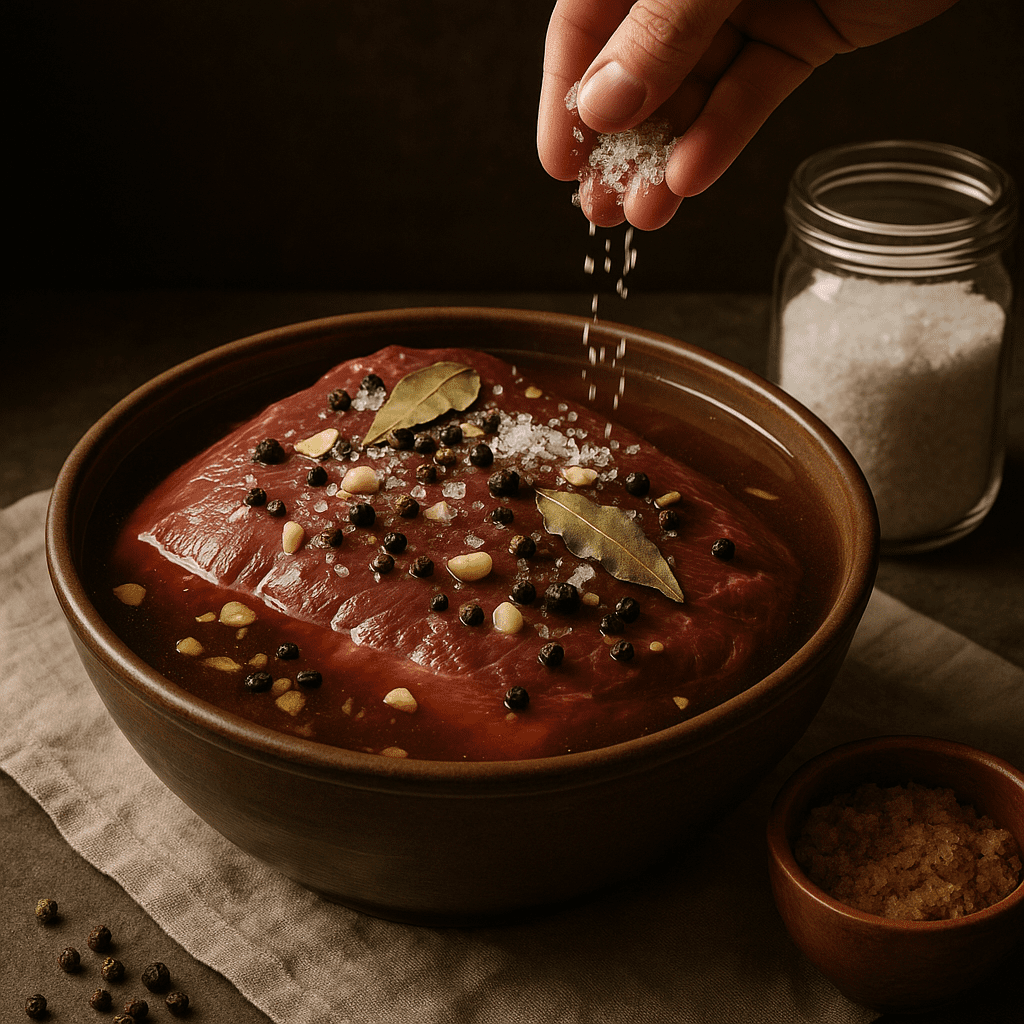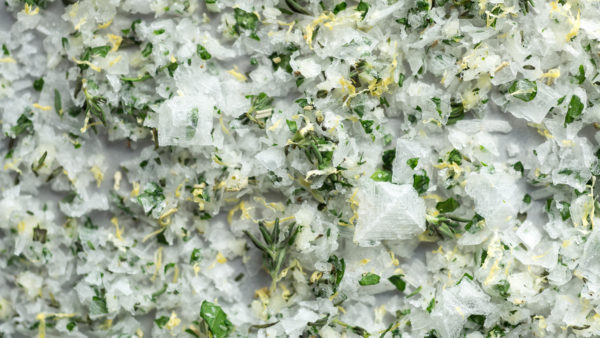Brine Time Locking In The Flavor Before The Smoke

Brining Wild Meat: A Game Changer for Flavor and Tenderness
The Importance of Brining Wild Meat
Brining is one of the most crucial steps to ensure that your wild game meat turns out delicious and tender. Whether you’re a seasoned hunter or just discovering the joys of outdoor cooking, understanding the benefits of brining can elevate your culinary game. It’s not just about adding flavor; it’s a science that enhances moisture retention and tenderness.
How Brining Works
At its core, brining involves soaking meat in a saltwater solution. The salt breaks down the muscle proteins, allowing the meat to absorb water. This process can lead to a juicier piece of meat once cooked, which is particularly crucial for lean cuts common in wild game. By brining before smoking or grilling, you’re not just enhancing flavor; you’re ensuring a more succulent bite.
Brining Techniques for Best Results
When brining wild meat, aim for a solution of about 1 cup of salt to 1 gallon of water, and feel free to experiment with sugar, herbs, and spices to infuse additional flavor. Soak the meat for 4 to 24 hours, depending on the cut and size. Remember to rinse well after brining to avoid overly salty flavor. This simple step can make all the difference in your backcountry culinary adventures.
Stay tuned for our next entry in the “Northern Smokehouse” series, where we will share a mouthwatering wild game recipe that incorporates these brining techniques perfectly!
45 minutes; 15 minutes
Serves
1 gallon; 1/2 cup
The most common complaint I hear about wild game is that it’s tough and dry; a symptom often the result of overcooking. The best way to counterbalance this issue is to start brining your meat. Salt can dramatically enhance juiciness, and in my opinion, is the most essential ingredient in your pantry.
Have you ever considered what makes meat juicy? Two factors contribute to this mouthfeel: fat being released from the fibers as you chew, and water that is naturally present in the tissue.
Juices squeeze out of meat as it cooks. The higher the heat, the more you lose. Since wild game is usually very lean, it’s detrimental to overcook because there’s no fat to make up for the excessive moisture loss. The easiest way to avoid this undesirable situation is to utilize the power of salt.
Salt can react with meat in two very different ways. If you apply a large amount for an extended period, it will draw all the moisture out. We refer to this process as curing, and it aids in preservation. A brine is salt dissolved in water with various herbs and spices in which you submerge meat or inject into meat. It has the opposite effect and increases the amount of moisture in the muscle tissue.
The salt in a brine denatures and relaxes protein structures. This allows the muscle tissue to absorb water from the wet brine. In other words, it helps meat hold more water, which counterbalances moisture loss when heated. I like to think of it as insurance for overcooking. In addition, it tenderizes meat and enhances the natural flavors.
There are two types of brines, wet and dry. A classic, wet brine is the one you are probably most familiar with from preparing Thanksgiving turkeys.
A dry brine is a mixture of salt and other spices without the liquids. In layman’s terms, it’s a dry rub applied to meat.
While technically a dry brine and a cure are the same thing, the main difference is the purpose. Unlike curing, a dry brine uses only enough salt to lightly cover the meat, not encrust it, for one to three days without having to rinse. The primary goal is to infuse foods with moisture and flavor.
Both types of brines are beneficial. A wet brine is perfect for cooking skinless birds or hefty cuts of meat before smoking. A common solution is 3 to 6% salt. My go-to ratio is a quarter of a cup of kosher salt for every four cups of water. You can include sugar to counterbalance the salt and add peppercorns, garlic, or herbs for flavor.
Remember that the longer you brine, the saltier the meat will be. Small birds or game may only need 8 to 12 hours, while turkeys or whole hams benefit from 24 to 48 hours in the refrigerator. Always rinse the meat with cold water before cooking to remove excess salt.
When it comes to cooking plucked birds, it’s easier to achieve crispy skin if you go with a dry brine. The added water from a wet brine pumps liquid into the skin, which can make it rubbery if not thoroughly dried out before cooking. The dry-brine method is also my trick for making the perfect backstrap steak.
Below are two recipes; one is a classic wet brine to use for almost any type of wild game that you plan to braise, roast, or smoke. It is perfect for skinless birds, geese, rabbits, squirrels, bone-in hams, or shoulders from deer or hogs.
The garlic and herb salt is a homemade rub that I frequently use for plucked gamebirds. It’s excellent on pheasant, chukar, quail, and partridge. In fact, I use this rub to season my turkey every Thanksgiving instead of a traditional wet brine. It’s also a smart way to season potatoes and mushrooms.
Ingredients
Classic Brine
- 1 cup kosher salt
- 1 cup sugar
- 1 gallon of water
- 2 tbsp. peppercorns
- 4-6 bay leaves
- 4 – 6 sprigs of fresh herbs
Garlic and Herb Salt
- 1/2 cup kosher salt
- 2 tbsp of mixed fresh herbs such as rosemary, thyme, parsley, or sage
- 2 cloves of garlic, minced
- 1/2 lemon, zested
- 1 tbsp. fresh cracked pepper
Also works with
Special equipment
Preparation
Combine in a large pot, bring to a boil let cool compleatly pour over meat cover and let it sit for a min of 12 hours but 48 is better.

